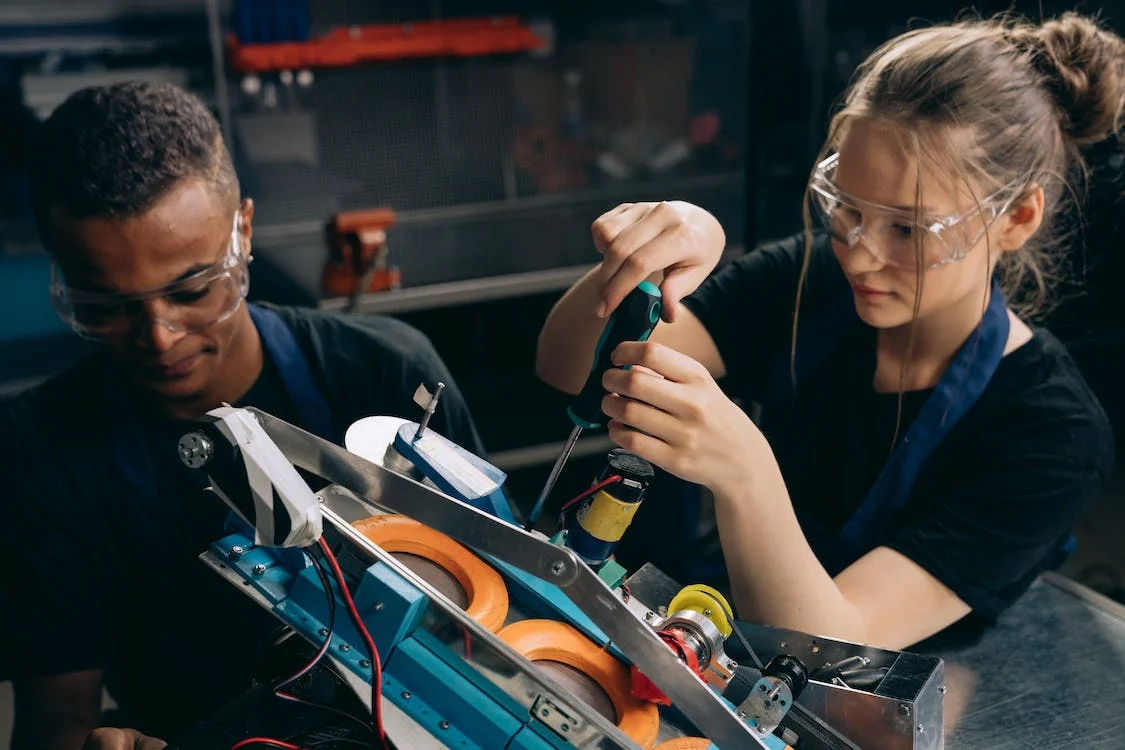In the world of manufacturing, documentation plays a vital role in maintaining quality control, ensuring compliance, and enhancing production efficiency. Effective submittal practices are key to streamlining the documentation process and maximizing its benefits. From creating clear and concise documents to implementing efficient approval procedures, every step towards an optimized submittal process directly impacts the overall success of a manufacturing operation. In this blog, we will delve into the importance of streamlining manufacturing documentation and explore how effective submittal practices contribute to a smoother and more productive workflow.
Submittal Practices for Manufacturing
Streamlining the Manufacturing Process
Manufacturing documentation plays a crucial role in ensuring the smooth and efficient operation of any production line. It encompasses a wide range of records, including product specifications, instructions, work orders, quality control reports, and compliance documentation. Effective submittal practices in manufacturing can significantly improve production efficiency, streamline workflows, and enhance overall business operations.
Enhancing Quality Control
One of the key benefits of implementing effective submittal practices in manufacturing is the ability to enhance quality control. By ensuring that all required documentation is accurately submitted and approved at each stage of the manufacturing process, companies can minimize errors and prevent potential quality issues.
Having a well-defined process for submitting manufacturing documentation allows for systematic review and verification. It enables manufacturers to ensure that all products meet the necessary quality standards, while also identifying any areas for improvement.
Promoting Compliance in Manufacturing
Compliance with industry regulations and standards is a critical consideration for manufacturing companies. Effective submittal practices assist in promoting and ensuring compliance throughout the production process.
By requiring documentation to be submitted and approved at each stage, manufacturers can verify that all necessary regulations and standards are being met. This helps to mitigate risk, avoid penalties, and maintain a positive reputation within the industry.
Boosting Production Efficiency
Streamlining the submittal process for manufacturing documentation has a direct impact on production efficiency. By establishing clear guidelines and timelines, manufacturers can eliminate bottlenecks, reduce time-consuming manual tasks, and facilitate quicker decision-making.
Automation tools and software solutions can also be implemented to further streamline the submittal process. These technologies enable real-time collaboration, document tracking, and automated notifications, resulting in faster turnaround times and improved overall productivity.
The Importance of Documentation Standardization
To fully benefit from effective submittal practices, it is essential to have standardized documentation formats and templates. This ensures consistency across submissions and makes it easier for all stakeholders to review and comprehend the information.
Standardizing manufacturing documentation also helps in maintaining accurate records and enabling effective communication both internally and with external stakeholders. It minimizes the chances of misunderstandings, delays, and errors, leading to smoother operations and improved outcomes.
The Future of Manufacturing Documentation
As manufacturing processes continue to evolve, so does the need for efficient documentation practices. The integration of digital technologies, such as cloud-based platforms and artificial intelligence, offers exciting opportunities for further streamlining and automating the submittal process.
Manufacturers should embrace these advancements to stay competitive and optimize their operations. By leveraging these technologies, companies can achieve greater accuracy, speed, and traceability in their documentation processes, ultimately leading to improved production efficiency and customer satisfaction.
Effective submittal practices in manufacturing documentation are paramount to achieving production efficiency, ensuring quality control, promoting compliance, and enhancing overall business operations. By streamlining the submittal process and embracing technological advancements, manufacturers can stay ahead in a rapidly changing industry.
Did you know that effective submittal practices in manufacturing can increase production efficiency by up to 50 percent and improve quality control by reducing errors and rework?
Frequently Asked Questions
1. What is manufacturing documentation?
Manufacturing documentation refers to the set of records and documents that detail the processes, procedures, specifications, and guidelines involved in the manufacturing of products. It includes everything from design and engineering documents to production plans, quality control procedures, and compliance documentation.
2. How can effective submittal practices benefit manufacturing documentation?
Effective submittal practices play a crucial role in streamlining the management and approval of manufacturing documentation. By ensuring timely and accurate submission of documents, companies can enhance quality control, compliance, and overall production efficiency. This allows for smoother collaboration between various teams and stakeholders involved in the manufacturing process.
3. What are some examples of submittal practices in manufacturing?
Submittal practices in manufacturing can include the submission of design drawings, product specifications, test reports, material certifications, and other relevant documents to the appropriate parties for review and approval. These practices often involve a standardized process, including document tracking, revision control, and the establishment of clear timelines and responsibilities.
4. How can streamlining documentation submissions enhance production efficiency?
Streamlining documentation submissions eliminates delays caused by manual handling of paperwork and minimizes the risk of errors or miscommunication. By implementing digital platforms and automated workflows, companies can ensure faster review, approval, and distribution of manufacturing documentation. This significantly reduces cycle times and bottlenecks, ultimately improving production efficiency and overall operational performance.
5. Why is quality control important in manufacturing?
Quality control in manufacturing is vital to ensure that products consistently meet or exceed specified requirements and customer expectations. It involves implementing processes, inspections, and tests at various stages of production to identify and correct any deviations or defects. Effective quality control practices not only enhance product reliability and customer satisfaction but also minimize scrap, rework, and warranty costs.
6. How does compliance play a role in manufacturing?
Compliance in manufacturing refers to adhering to applicable laws, regulations, industry standards, and internal policies throughout the production processes. It ensures that products are safe, ethically produced, and meet all necessary requirements. By incorporating compliance practices, companies can avoid legal and reputational risks, maintain customer trust, and demonstrate their commitment to ethical and responsible manufacturing.
Wrap Up: Enhancing Manufacturing Documentation with Effective Submittal Practices
In conclusion, streamlining manufacturing documentation through effective submittal practices is essential for businesses looking to improve production efficiency, quality control, and compliance. By implementing a structured and organized approach to submitting and approving documentation, manufacturers can eliminate delays, reduce errors, and enhance communication across departments.
Emphasizing the importance of proper submittal practices, manufacturers can maintain regulatory compliance, improve product quality, and ensure all stakeholders are aligned. Investing time and effort into optimizing documentation processes ultimately contributes to a smoother workflow and increased overall efficiency.
We would love to hear from you. Share your thoughts on how effective submittal practices have impacted your manufacturing operations in the comments below!







Leave a Reply
You must be logged in to post a comment.